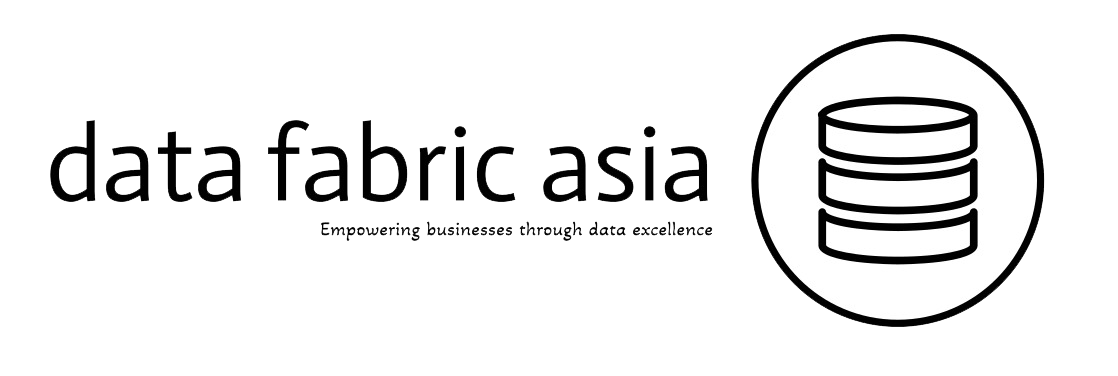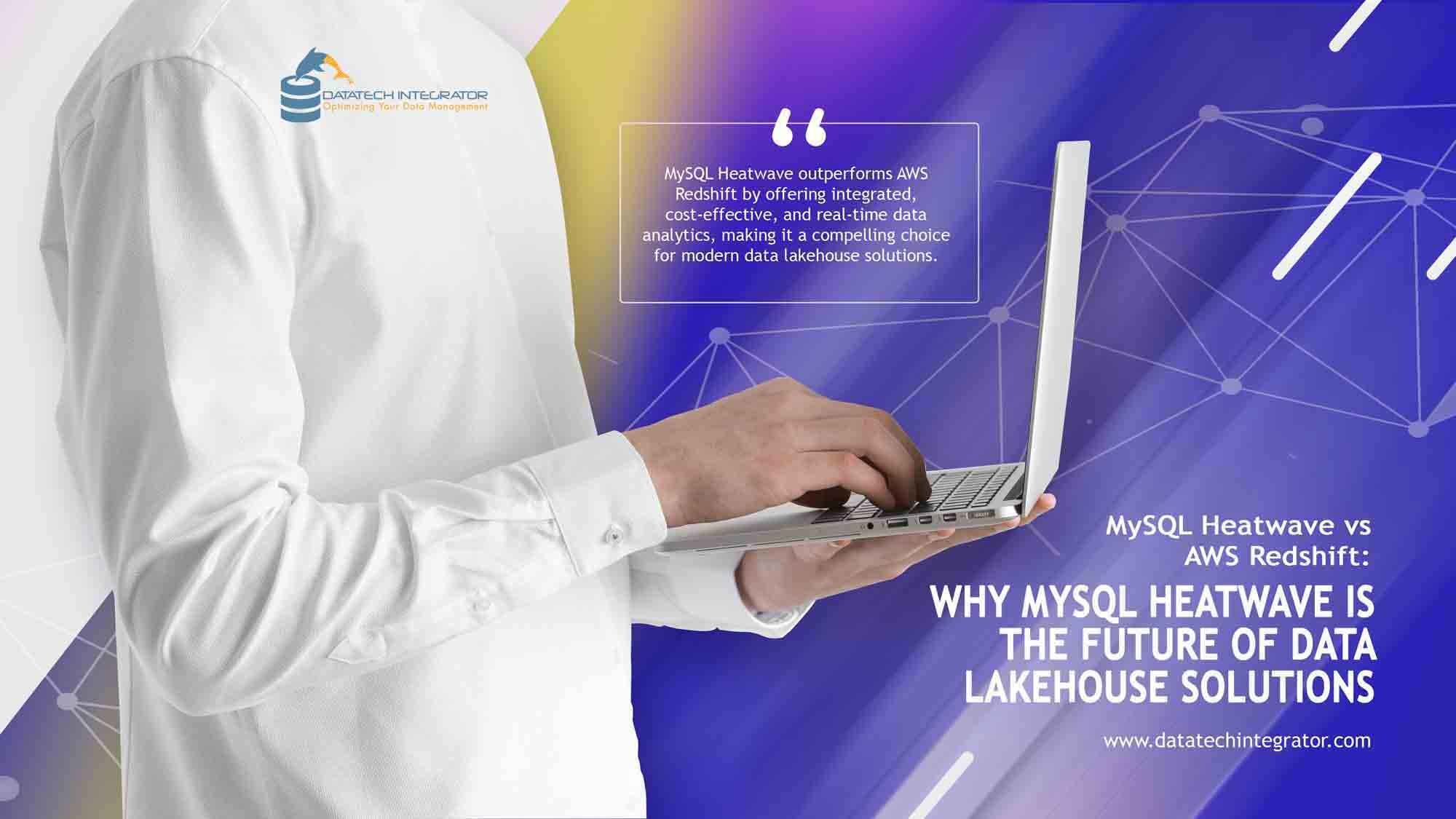In today’s data-driven world, businesses are increasingly turning to data lakehouse architectures to handle vast amounts of data for real-time analytics, decision-making, and competitive advantage. AWS Redshift has been a popular choice for enterprises seeking a scalable and reliable data warehouse. However, as organizations scale and demands increase, the limitations of AWS Redshift—particularly in terms of cost, performance, and complexity—have led many to seek alternatives.
Enter MySQL Heatwave, Oracle’s cutting-edge solution that offers an integrated, high-performance, and cost-effective approach to managing and analyzing data. With decades of experience in enterprise data solutions, Oracle is setting a new standard with MySQL Heatwave, positioning it as a formidable alternative to AWS Redshift.
The Evolution of Data Lakehouses
Data lakehouses have emerged as a hybrid solution, combining the strengths of data lakes and data warehouses. This architecture enables organizations to store vast amounts of raw data while also supporting advanced analytics and real-time processing. AWS Redshift, with its robust architecture and seamless integration with the AWS ecosystem, has been a go-to option for building data lakehouses. However, as data volumes grow and queries become more complex, the challenges associated with AWS Redshift have become more pronounced.
The Challenges of AWS Redshift: Cost, Performance, and Complexity
AWS Redshift is undeniably powerful, but it comes with significant trade-offs that can hinder its effectiveness for modern enterprises.
1. Rising Costs:
One of the most significant challenges with AWS Redshift is its cost structure. While Redshift offers a pay-as-you-go model, costs can quickly escalate as data volumes increase and workloads become more complex. Organizations often find themselves facing unexpected bills, especially when scaling their operations or running extensive analytics. The cost of storage, computing, and data transfer within the AWS ecosystem can add up, making Redshift an expensive option for long-term use.
Example: A mid-sized e-commerce company initially adopted AWS Redshift to handle its sales data analytics. As the business grew and customer transactions increased, the company expanded its Redshift cluster to manage the additional data. However, they soon realized that their monthly AWS bill had ballooned due to the increased compute and storage costs. What started as a cost-effective solution turned into a significant expense, forcing the company to reconsider its data architecture strategy.
2. Performance Bottlenecks:
AWS Redshift was designed for large-scale data processing, but it can struggle with certain workloads, especially those requiring real-time analytics or handling complex queries on large datasets. Performance issues can arise due to the need to optimize queries manually, manage concurrency, and handle data distribution across nodes. For businesses that rely on quick insights and real-time decision-making, these performance bottlenecks can be a significant drawback.
Example: A financial services firm using AWS Redshift for risk analysis faced challenges when running complex, ad-hoc queries across their large datasets. The queries often took hours to complete, delaying critical insights. The firm had to invest in additional resources to optimize query performance and manage workloads, which increased both the complexity and cost of their data operations.
3. Complexity of Management:
Managing and optimizing AWS Redshift requires a deep understanding of its architecture, including how data is distributed across nodes, how queries are executed, and how to optimize performance. This complexity often necessitates dedicated resources, increasing the overall cost of ownership. Additionally, integrating Redshift with other data services and managing ETL (Extract, Transform, Load) processes can be cumbersome, further adding to the complexity.
Example: A global retail chain using AWS Redshift for customer behavior analytics found that managing its data pipeline became increasingly complex as it integrated more data sources. The ETL processes required constant monitoring and tuning, and the company had to hire specialized engineers to maintain and optimize the Redshift environment. This complexity slowed down their ability to innovate and respond to market trends.
MySQL Heatwave: The Next-Generation Solution for Data Lakehouses
Oracle’s MySQL Heatwave is a game-changer in the world of data management, offering a compelling alternative to AWS Redshift. By integrating real-time analytics capabilities directly into MySQL Database Service, MySQL Heatwave eliminates the need for separate data warehouses and complex ETL processes. This not only simplifies the architecture but also delivers superior performance and cost-efficiency.
1. Unmatched Performance:
MySQL Heatwave is designed to handle the most demanding analytics workloads with ease. Its in-memory query accelerator allows for real-time analytics directly on transactional data, enabling businesses to derive insights faster than ever before. Benchmarks have shown that MySQL Heatwave can outperform AWS Redshift by a significant margin, particularly for complex queries and mixed workloads.
Example: A digital marketing agency switched from AWS Redshift to MySQL Heatwave to analyze clickstream data from multiple campaigns. With MySQL Heatwave, they were able to run real-time analytics directly on their transactional data, reducing query times from hours to seconds. This improvement allowed the agency to optimize campaigns on the fly, leading to better client outcomes and increased revenue.
2. Cost Efficiency:
One of the most compelling reasons to consider MySQL Heatwave over AWS Redshift is its cost-efficiency. MySQL Heatwave offers a more predictable and lower-cost alternative, especially as data volumes grow. The integrated nature of MySQL Heatwave, with its ability to run both OLTP (Online Transaction Processing) and OLAP (Online Analytical Processing) workloads within the same database, eliminates the need for separate services and reduces the overall cost of ownership.
Example: A healthcare provider managing patient records and health data adopted MySQL Heatwave to replace their AWS Redshift setup. With MySQL Heatwave, they were able to consolidate their OLTP and OLAP workloads into a single database, significantly reducing their infrastructure costs. The savings enabled them to invest in other critical areas, such as improving patient care and expanding their services.
3. Simplicity and Integration:
One of the key strengths of MySQL Heatwave is its simplicity. Unlike AWS Redshift, which requires extensive configuration and optimization, MySQL Heatwave is fully integrated into the MySQL Database Service. This integration reduces complexity and simplifies the overall data architecture, allowing businesses to focus on what matters most—analyzing their data and driving growth.
Example: A media company using AWS Redshift for content recommendation faced challenges in managing their data pipeline and ensuring data consistency. By migrating to MySQL Heatwave, they simplified their data architecture, as Heatwave allowed them to process and analyze data within the same environment. This change not only improved data accuracy but also accelerated their ability to deliver personalized content to users, enhancing the overall user experience.
Oracle’s Legacy: Trust and Innovation in Data Solutions
Beyond the technical advantages of MySQL Heatwave, it’s important to consider the legacy of trust and innovation that Oracle brings to the table. Since delivering its first software in 1977, Oracle has been at the forefront of enterprise data solutions, consistently pushing the boundaries of what’s possible in data management.
1. A History of Innovation:
Oracle’s commitment to innovation is evident in the development of MySQL Heatwave. By leveraging decades of experience and expertise, Oracle has created a solution that meets the needs of modern enterprises, from small businesses to global corporations. MySQL Heatwave represents the culmination of years of research and development, designed to address the challenges of today’s data landscape.
Example: Oracle’s innovations, such as Autonomous Database and MySQL Heatwave, have transformed how businesses manage their data. For instance, a large financial institution leveraged Oracle’s Autonomous Database to automate routine database management tasks, freeing up their IT team to focus on strategic initiatives. This focus on innovation is also reflected in MySQL Heatwave, which brings advanced analytics capabilities to the MySQL ecosystem.
2. Global Support and Community:
Oracle’s global presence and extensive support network provide MySQL Heatwave users with unparalleled access to resources, expertise, and assistance. Whether you’re dealing with a complex implementation or simply need advice on best practices, Oracle’s support teams are there to help. Additionally, the MySQL community, one of the largest and most active open-source communities in the world, offers a wealth of knowledge, collaboration opportunities, and peer support.
Example: A startup specializing in IoT solutions chose MySQL Heatwave for their data needs due to Oracle’s strong support network. When they encountered a performance issue, Oracle’s support team quickly provided a solution, allowing the startup to maintain their project timelines. The support and community around MySQL Heatwave played a crucial role in the startup’s success.
The Future of Data Management: Why MySQL Heatwave is the Way Forward
As the data landscape continues to evolve, the need for solutions that are both powerful and cost-effective will only grow. MySQL Heatwave is poised to meet this demand, offering a next-generation alternative to AWS Redshift that delivers on the promises of performance, affordability, and simplicity.
1. Real-Time Analytics for the Modern Enterprise:
In today’s fast-paced business environment, the ability to analyze data in real-time is no longer a luxury—it’s a necessity. MySQL Heatwave’s in-memory query accelerator ensures that businesses can process and analyze data faster than ever before, enabling them to stay ahead of the competition and make informed decisions in real-time.
Example: An online retailer using MySQL Heatwave to analyze customer behavior in real-time was able to adjust pricing and inventory based on live data, leading to a 20% increase in sales during a major shopping event. This ability to act on real-time insights gave them a significant competitive edge.
2. Cost-Effective Scalability:
As organizations grow, so too does their need for scalable data management solutions that can efficiently handle increased data volumes without incurring prohibitive costs. MySQL Heatwave’s architecture is designed to seamlessly scale with business needs, offering both horizontal and vertical scaling options. This ensures that as data grows, MySQL Heatwave can accommodate the increased workload without a corresponding surge in costs.
Example: A fintech startup experiencing rapid user growth faced challenges with their existing data warehouse, which became increasingly expensive as they added more users and transactions. By transitioning to MySQL Heatwave, the startup was able to scale their operations smoothly. The platform’s ability to handle both OLTP and OLAP workloads within the same environment reduced the need for additional infrastructure, resulting in significant cost savings and enhanced operational efficiency.
3. Enhanced Data Security and Compliance:
As data privacy regulations become more stringent, organizations require solutions that not only manage and analyze data effectively but also ensure that sensitive information is secure and compliant with global standards. MySQL Heatwave, backed by Oracle’s robust security features, offers advanced encryption, access controls, and auditing capabilities to safeguard data across all stages of processing.
Example: A healthcare organization required a data management solution that could handle large volumes of patient data while ensuring compliance with regulations like HIPAA. By adopting MySQL Heatwave, the organization benefited from Oracle’s comprehensive security features, which ensured that all patient data was encrypted both in transit and at rest. Additionally, the built-in auditing capabilities helped the organization maintain compliance with regulatory requirements, reducing the risk of data breaches and associated penalties.
Conclusion: The Case for MySQL Heatwave as the Future of Data Lakehouse Solutions
As businesses navigate the complexities of the modern data landscape, the need for a data management solution that is powerful, cost-effective, and easy to use has never been more critical. MySQL Heatwave addresses the shortcomings of traditional data warehouses like AWS Redshift by offering a unified platform that combines the best of OLTP and OLAP capabilities, delivering real-time analytics, cost efficiency, and simplified management.
Oracle’s legacy of innovation, coupled with the advanced features of MySQL Heatwave, positions it as a leading solution for enterprises looking to future-proof their data architecture. Whether you’re a growing startup or a large enterprise, MySQL Heatwave provides the tools needed to harness the power of your data, drive informed decision-making, and maintain a competitive edge in today’s data-driven world.

